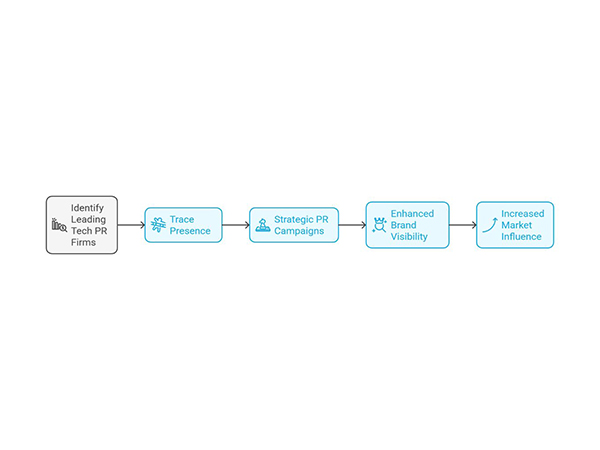
Hiring Activity Picks up Pace with Robust 27 Percent YoY Growth, Hybrid Work Format Holds Steady: foundit
Oct 17, 2024
BusinessWire India
Bengaluru (Karnataka) [India], October 17: foundit (formerly Monster APAC & ME), India's leading jobs & talent platform, has released the latest edition of the foundit Insights Tracker (fit), presenting the hiring trends for September 2024. The tracker highlights the decreasing influence of remote work, especially Work-From-Home (WFH) roles.
* Overall hiring surged by 27% year-on-year in September 2024, with stable 8.7% growth month-on-month.
* BFSI sector grew by 19% MoM, while Coimbatore and Jaipur led Tier-2 city hiring with 12% and 10% growth, respectively.
* Hybrid work held steady, with 21% of all job roles offering hybrid work options in Sept '24, while hiring for fully remote roles (WFH) dipped to 10% from 12% YoY
* Remote working roles in Product Management jumped to 4%, up from 1% last year.
According to the tracker, hiring activity has surged by 27% year-on-year (September 2023 vs September 2024), with the hiring for hybrid work opportunities rising significantly. Even on a month-on-month (MoM) basis, hiring saw a better than moderate 8.7% increase in September 2024, reflecting the stable growth in both traditional and flexible work environments.
Speaking on the rise of hybrid work trends, Sekhar Garisa, CEO of foundit, said: "The job market has bounced back strongly, with hiring activity on the rise. We've seen a clear shift in the remote job landscape--hybrid work has firmly taken the lead, holding 21% of hiring demand, as it offers the best of both worlds: flexibility and in-person collaboration.
Early-career professionals continue to embrace this model for its balance between growth and adaptability, while mid- and senior-level talent are steadily moving back to in-office roles, driven by a need for collaboration and leadership. As the share of hybrid roles in the job market remains steady, especially in sectors like BFSI and IT, recruitment practices need to evolve."
Sector-specific trends: BFSI and Real Estate See Month-on-Month Growth
The Banking, Financial Services, and Insurance (BFSI) sector experienced the strongest month-on-month (MoM) growth, surging by 19% in September 2024. This robust increase underscores the sector's ongoing demand for professionals as financial institutions continue expanding their digital and customer service operations.
Real Estate showed decent 5% MoM growth, continuing its recovery with demand for talent in residential and commercial developments.
Meanwhile, the IT-Software & Services sector maintained steady momentum, with 10% MoM growth driven by ongoing digital transformation initiatives.
Function-specific trends: Finance and Senior Management See Sharp Growth
Finance & Accounting roles registered a sharp 16% MoM growth, highlighting the focus on financial management and regulatory compliance.
Senior Management roles also saw strong 15% MoM growth, as companies reinforced leadership teams to drive growth.
IT roles maintained steady growth at 6% MoM, reflecting continued demand for tech professionals to support digital infrastructure and transformation projects.
Customer Service roles increased by 10% MoM but dropped 13% YoY, highlighting a short-term recovery despite the long-term decline driven by automation and AI replacing traditional support roles.
Location-specific highlights: Bangalore, Coimbatore, and Jaipur Take the Lead
Hiring Trends Across Key Locations
Bangalore remains at the top with 11% MoM growth, particularly in IT, BFSI, and real estate sectors.
Other notable movers include Coimbatore, which recorded an impressive 12% MoM growth, driven by IT and engineering roles, and Jaipur, which saw 10% MoM growth, primarily in manufacturing and engineering.
Work Model Insights: Hybrid and In-Office Job Opportunities on the Rise
The data highlights a clear shift in job market preferences, with hybrid work opportunities, holding steady at 21% in both 2023 and 2024, while job seeker availability for these positions has decreased from 49% to 38%.
Conversely, WFH roles have dropped from 12% to 10%, with job seeker availability also declining from 28% to 18%, indicating a shift back towards in-office environments driven by evolving employer policies.
Early-career professionals continue to value hybrid models for their balance of flexibility and growth, while mid- and senior-level professionals are leaning more towards in-office roles.
Year-on-Year Shift in Hiring for Hybrid Job Opportunities Across Industries
While IT roles still lead the remote job landscape, their share has declined from 46% in 2023 to 42% in 2024, indicating a slight shift away from IT-specific remote opportunities. Other roles such as Product Management surged from 1% to 4%, highlighting their increasing relevance in remote work settings.
Analytics/Business Intelligence and Marketing & Communications roles also saw a slight increase in hiring for remote opportunities, reflecting their growing adaptability to virtual work environments.
Role-Specific Trends in Remote Jobs
Year-on-Year Shift in Hiring for Hybrid Job Opportunities Across Roles
While IT roles continue to dominate the remote job landscape, their share has dropped from 46% in September 2023 to 42% in September 2024, indicating a slight shift away from IT-specific remote opportunities. In contrast, other roles are seeing growing hiring for remote work:
* Product Management increased from 1% to 4%, reflecting the growing importance of product-focused roles that can be managed remotely.
* Analytics/Business Intelligence and Marketing & Communications both grew slightly, from 4% to 5%, highlighting the expanding relevance of these functions in remote settings.
* Human Resources also saw an increase from 3% to 4%, as HR functions adapt to remote talent management and employee engagement.
* On the other hand, Consulting roles saw a notable drop in hiring for remote roles, falling from 3% to 1%, possibly due to the shift towards more client-facing, in-person interactions.
Location Insights: Tier-2 Cities Take the Lead in Remote Job Distribution
Year-on-Year Shift in Hiring for Hybrid Job Opportunities Across Locations
Interestingly, Tier-2 cities now account for 66% of remote jobs, outpacing metro areas, which hold only 34% of these positions. This suggests that opportunities for remote work are expanding in non-metro areas, providing access to a broader talent pool outside traditional urban hubs. The growth in Tier-2 cities reflects the decentralisation of work, as companies increasingly offer remote roles to workers in smaller cities and regions.
(ADVERTORIAL DISCLAIMER: The above press release has been provided by BusinessWire India. ANI will not be responsible in any way for the content of the same)






